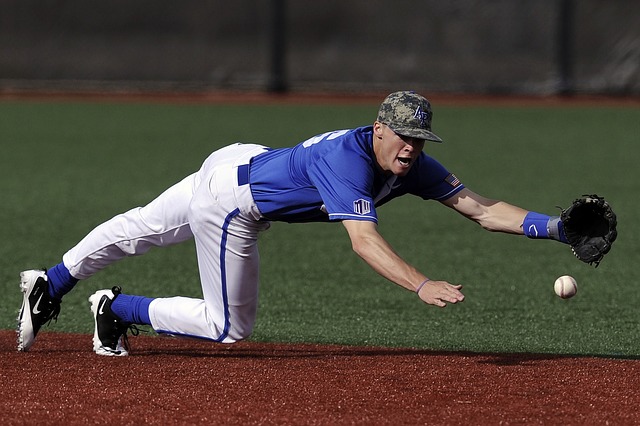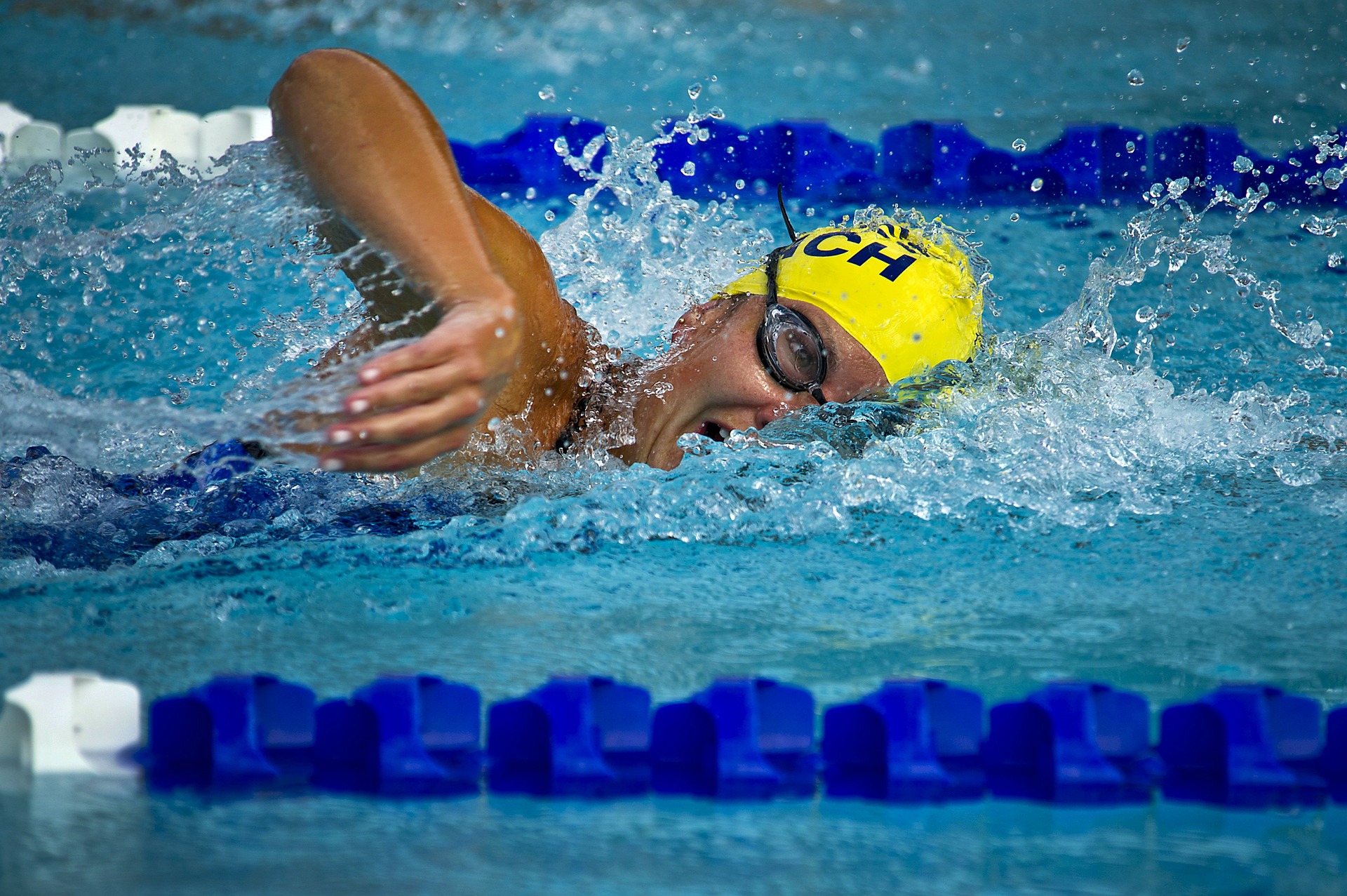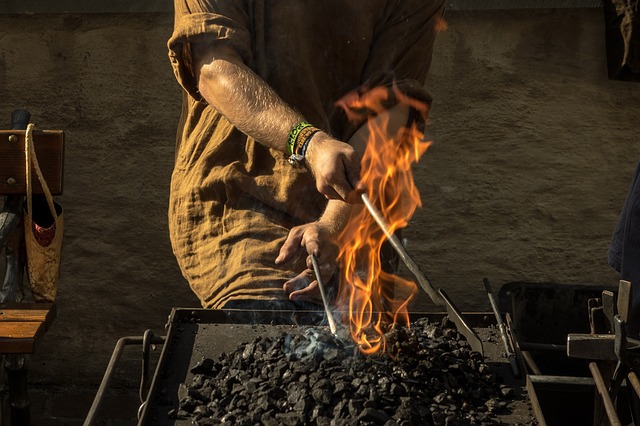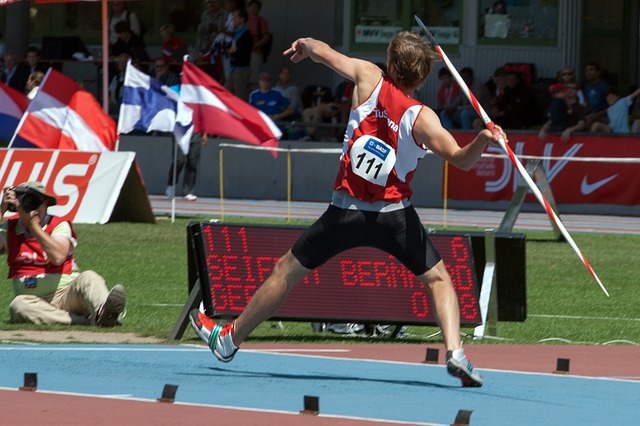Latest News and Information
Overview of ACL Tears and Prevention with Morrill, WY Physical Therapy and All Other Locations
August 9, 2017
Each year, over 200,000 Americans experience an injury to their anterior cruciate ligament, known as the ACL. This is a ligament within the knee joint, located in the middle of the knee. It is one of the key pieces to stability of one’s knee, so you can imagine an injury to this area can be painful and disruptive. Since it is such a used ligament, injuries are possible for everyone. Whether you are an athlete or just managing through your day-to-day, it is best to be proactive to prevent an injury. Learn about the top ways the ACL gets torn, go-to prevention tips, and reasons to use local Cheyenne, WY physical therapy to prevent or care for an injury.
Whether you are looking for help recovering from an ACL tear injury, or are trying to find ways to avoid one, North Platte Physical Therapy can help. We provide quality care for rural Wyoming and western Nebraska, so you can be sure to find a location near you. Contact us today to get started!
Read More...
How is the ACL torn?
While anyone can tear their ACL, it is most commonly noted in athletes as they make several twisting motions with their legs. One of the most common ways one injures themselves is after a sharp, quick turn, or a sudden stop. However, in the OrthoInfo article about an ACL injury, does it require surgery, 30 percent of ACL tears are due to a contact injury. Many who have torn their ACL have said there is a popping noise made as soon as the ligament tears. At that point, the area becomes painful in an instant. There is also swelling and instability. Those with the injury can no longer put all of their weight on the knee and need assistance walking. It is crucial to get to a doctor as soon as possible to get to the recovery process.Prevention Tips
In order to maintain quality in your knee, it is important to remember a few key things to prevent an injury. First is warming up and stretching. This will allow your body to get blood circulating before being active. Next is posture. You want to know how to maintain perfect posture and stance, especially if you are playing sports. If you play a sport or are in an activity that requires jumping, jump with your knees over your feet. Last and importantly, is managing quick changes in direction. Avoid going in positions that force you to make quick movements side to side.Why Physical Therapy?
Physical therapy is a great option, even if you do not have an ACL injury. Physical therapy is a great option for athletes to improve their form and practice strength training. In addition, physical therapists can work with patients one-on-one to ensure they know all of the forms and techniques to help them be the best at their sport. For those with an ACL injury, it is important to see a physical therapist during recovery. With this ligament being such a crucial player to your everyday walking, they will assess your situation and create a plan to help you get back on your feet. Learn more about physical therapy treatment for ACL tears.Whether you are looking for help recovering from an ACL tear injury, or are trying to find ways to avoid one, North Platte Physical Therapy can help. We provide quality care for rural Wyoming and western Nebraska, so you can be sure to find a location near you. Contact us today to get started!
Benefits of Cupping Therapy from Physical Therapy Experts
August 2, 2017
During the last summer Olympics, many notices large, round red circles on athletes--particularly swimmers. While this is a form of therapy that goes back thousands of years, it’s gained more exposure in the public eye within the last few years. It is especially common with athletes but can be a helpful for anyone looking to reduce pain. Get the go-to ins and outs of cupping, the top types of ways athletes that benefit from this form of therapy, and some of the best ways athletes can take advantage of physical therapy to reduce pain or become a better athlete.
Cupping if a form of therapy that is based in traditional Chinese medicine and dates back thousands of years. Its goal is to increase the amount of blood flow in an areas by using suction cups in specific areas. It brings blood near the top of the skin and has been said to create better blood circulation in the area. For many, it has help speed up the healing process after an injury. In addition, it has been used to treat inflammation and chronic pain A cup, made out of glass, bamboo or silicone, for a few minutes. Cupping has two methods: Fixed and moved. For fixed, a therapist will only be placed in specific areas for the duration of treatment. For moved cupping, they will apply cream on your skin and use them in a massage-like motion.
Athletes have praised their results with cupping. When CNN talked to athletes for the Olympic Games 2016, swimmers in particular were happy with its ability to recover quickly. In addition, they mentioned it was a great way to stimulate muscles, which can be great for any athlete in any sport. When there is tension in the muscles, it can poorly affect one’s performance. For many athletes, sore muscles can be common, which cupping is also one of the premier ways to alleviate and restore quality. Â
In addition to cupping, athletes can benefit from physical therapy. It is extremely crucial post-injury to work with a physical therapist. Often times, if an athlete does not train and re-learn with their muscles properly, you can develop incorrect form leading to a re-occurrence of an injury or make the injured area much worse. Through various types of exercises, stretching, and other techniques, the area will be worked with to get back to their full potential. But physical therapy is not just for athletes who have sustained an injury. By working with a physical therapist, you can enhance your form for the sport(s) you play and become a better athlete.
As an athlete, make sure you familiarize yourself with the most common sports injuries that require physical therapy. Then whether you are looking for ways to avoid these injuries, become a better athlete or need help recovering, North Platte Physical Therapy is your local physical therapist that is here to help in the Wyoming or Nebraska regions. Contact us today to see how we can help you!
Read More...
What is Cupping?
Cupping if a form of therapy that is based in traditional Chinese medicine and dates back thousands of years. Its goal is to increase the amount of blood flow in an areas by using suction cups in specific areas. It brings blood near the top of the skin and has been said to create better blood circulation in the area. For many, it has help speed up the healing process after an injury. In addition, it has been used to treat inflammation and chronic pain A cup, made out of glass, bamboo or silicone, for a few minutes. Cupping has two methods: Fixed and moved. For fixed, a therapist will only be placed in specific areas for the duration of treatment. For moved cupping, they will apply cream on your skin and use them in a massage-like motion.
Athletes and Cupping
Athletes have praised their results with cupping. When CNN talked to athletes for the Olympic Games 2016, swimmers in particular were happy with its ability to recover quickly. In addition, they mentioned it was a great way to stimulate muscles, which can be great for any athlete in any sport. When there is tension in the muscles, it can poorly affect one’s performance. For many athletes, sore muscles can be common, which cupping is also one of the premier ways to alleviate and restore quality. Â
Other Ways Physical Therapy Helps Athletes
In addition to cupping, athletes can benefit from physical therapy. It is extremely crucial post-injury to work with a physical therapist. Often times, if an athlete does not train and re-learn with their muscles properly, you can develop incorrect form leading to a re-occurrence of an injury or make the injured area much worse. Through various types of exercises, stretching, and other techniques, the area will be worked with to get back to their full potential. But physical therapy is not just for athletes who have sustained an injury. By working with a physical therapist, you can enhance your form for the sport(s) you play and become a better athlete.
As an athlete, make sure you familiarize yourself with the most common sports injuries that require physical therapy. Then whether you are looking for ways to avoid these injuries, become a better athlete or need help recovering, North Platte Physical Therapy is your local physical therapist that is here to help in the Wyoming or Nebraska regions. Contact us today to see how we can help you!
Helping Your Child Recover from Torticollis with Physical Therapy in Hulett, WY and All Other Locations
July 19, 2017
Many have experienced the feeling of a sore neck. Often times it comes from a poor night’s sleep where the neck is stiff. After a day or so the feeling goes away and you get back to normal. For some children however, they have a more drastic experience of this that they might have been born with: Torticollis. One of the best things a parent or guardian can do is talk to a doctor upon recognizing the signs and symptoms. Learn more about what torticollis in children is, top symptoms to watch out for, and go-to treatments with your doctor and in local physical therapy.
When it comes to getting the proper physical therapy and care for your child, North Platte Physical Therapy is a place you can trust. We provide excellent pediatric therapy for a wide range of issues to help your child be as healthy as they can be. With nearly 20 years of combined experience, we treat children of all ages to ensure they get back to their health. Contact us today to see how we can help you or your child.
Read More...
Torticollis in children
When a child has torticollis, their neck is actually twisted to one side. You will notice a slight or drastic shift to one side or the other. So what is torticollis? The Seattle Children’s Hospital explains there are four types. Temporary torticollis is very similar to getting a pain in your neck after sleeping. It can happen after they are sick when lymph nodes in the area experience inflammation but goes away after a few days. Fixed torticollis is an improper growth whether the overall structure make for the child’s neck to be twisted to one side. They also mention Klippel-Fel syndrome where the child’s bones also grew improperly and they were born with an improper neck. Last and they say most common is muscular torticollis. The muscle’s in the child’s neck are so tight that it makes it difficult to move.  ÂSymptoms
One of the go-to signs a child has torticollis is when the neck is tilted to one side, or the child mentions how much hurts to move the neck to another side. With this, a child may also experience headaches, eye pain, tremors, one set of shoulders that is higher than the other, or a shorter than average neck. You may also notice swelling in the neck area which may happen due to an infection. In the event of an infection, it is crucial to see a doctor immediately to ensure conditions do not worsen. ÂTreatment and physical therapy
For some types of torticollis, especially muscular or swollen due to an illness, a doctor will prescribe medication to help ease the situation and restore the quality of your child’s health. Depending on the type of torticollis the child might have, an X-ray may be completed to get a better look. Another way to help strengthen and get the neck back to normal is through physical therapy. When working with a premier physical therapist, they will help to build strength in the muscles to help the child regain their range of motion.When it comes to getting the proper physical therapy and care for your child, North Platte Physical Therapy is a place you can trust. We provide excellent pediatric therapy for a wide range of issues to help your child be as healthy as they can be. With nearly 20 years of combined experience, we treat children of all ages to ensure they get back to their health. Contact us today to see how we can help you or your child.
Types of Skin Burns and How Lusk Physical Therapy and All Other Locations Assists with Recovery
July 12, 2017
Burns can occur from a mistake as simple as brushing against a hot pan that’s been in an oven or being exposed to a fire. This type of injury is incredibly painful and takes time to heal. With proper care, there are ways to cope with the pain and each type of burn will heal differently. Learn more about the top four types of burns, go-to tips on what to do if you sustain a burn injury, and using premier physical therapy in Lusk and all other locations to treat the situation.
What to Do If You Get a Burn
Upon getting a minor burn, immediately submerge the area in cool water for up to 15 minutes. If the area blisters, be careful to not break them. If they break on their own, gently wash the area, use an antibiotic cream and use a gauze to cover it to allow it to heal. For third-degree or fourth-degree burns, it is important to call 911 or go to an immediate care or emergency room as quickly as you can. With either of these serious burns, you may have trouble breathing, or if you were in a fire, carbon monoxide and other toxic fumes may have been inhaled. Do not be afraid to call for help and have an ambulance come to you to avoid putting others in danger by trying to get to a nearby hospital. By exploring WebMD’s thermal burns treatment, you can learn more about different types of burn and what you may experience, or how to help others.
Local physical therapy is essential for a recovery from serious burns. Your physical therapist will help properly dress burns and work with you to help increase your range of motion as you recover. When working with them, the quality of the areas affected will heal quicker and will also help to reduce scarring.
If you have sustained a serious burn injury, North Platte Physical Therapy’s wound and burn care services will help you make a recovery. Contact us today to learn how we can help you or your loved one.
Read More...
Four Types of Burns
The four types of burns are first-, second-, third- and fourth degree. Each type of burn depends on how badly the skin is affected by the burn. First-degree burns only affect the outer part of your skin. While painful, they usually only make the outside of your skin red and are irritable for a few days. Once a burn penetrates a layer into your skin, it becomes a second-degree burn. Signs of this burn include a blistering of the skin and swelling. Third-degree burns occur in extreme situations, including being exposed to fire, extremely hot liquids, or chemicals. In this case, the skin can turn a variety of colors such as white, yellow, brown, or even black. The area swells and becomes extremely dry. In some cases, the damage of a burn can be so severe so quickly that a person may not even feel pain because nerve endings become damaged. A fourth-degree burn is when a burn is so severe that it damages muscles and bones.What to Do If You Get a Burn
Upon getting a minor burn, immediately submerge the area in cool water for up to 15 minutes. If the area blisters, be careful to not break them. If they break on their own, gently wash the area, use an antibiotic cream and use a gauze to cover it to allow it to heal. For third-degree or fourth-degree burns, it is important to call 911 or go to an immediate care or emergency room as quickly as you can. With either of these serious burns, you may have trouble breathing, or if you were in a fire, carbon monoxide and other toxic fumes may have been inhaled. Do not be afraid to call for help and have an ambulance come to you to avoid putting others in danger by trying to get to a nearby hospital. By exploring WebMD’s thermal burns treatment, you can learn more about different types of burn and what you may experience, or how to help others.
Local physical therapy is essential for a recovery from serious burns. Your physical therapist will help properly dress burns and work with you to help increase your range of motion as you recover. When working with them, the quality of the areas affected will heal quicker and will also help to reduce scarring.
If you have sustained a serious burn injury, North Platte Physical Therapy’s wound and burn care services will help you make a recovery. Contact us today to learn how we can help you or your loved one.
Rotator Cuff Surgery and Using Physical Therapy in Casper and All Other Locations to Recover
July 5, 2017
The rotator cuff is an area of muscles and tendons. They house the shoulder joint and keep the area in line. Over time, due to certain consistent movements or an impact, a rotator cuff injury can occur. Rotator cuff injuries can be painful and it is best to work with your doctor on the issue, as well as physical therapy in Casper and all other locations. Learn more about rotator cuff injuries, top things to expect for surgery and the recovery process with physical therapy.
Â
If you have sustained a shoulder injury and need help recovering, North Platte Physical Therapy is your go-to physical therapist to help you along the way. Learn more about the different types of orthopedic injuries and services we offer, including injuries to your rotator cuff, and know we are there during your recovery from surgery. Our staff knows the best techniques to help you recover quickly to allow you to get back to your normal routine. Contact us today to see how we can help you.
Read More...
Rotator Cuff Injuries
Millions of Americans each year suffer from a rotator cuff injury. What is this type of injury? The shoulder socket is kept together all thanks to your rotator cuff. When the muscles or tendons in this area become damaged or are disconnected from your bone, it can be painful. There can be a mix of types of pain from issues moving your arm in any direction or fluid that gathers in the area leading to inflammation. Due to this pain, day-to-day activities become difficult. When there are tears, some are partial while for others, the muscle completely disconnects. Anyone that uses their shoulder through the same motions on a regular basis, does not get good blood supply to the area or suffers from bone spurs is subject to a rotator cuff injury.What to Expect for Surgery
While not all rotator cuff injuries require surgery, there are a few types that will require it. During rotator cuff repair, WebMD explains surgery will remove loose fragments of a tendon or other debris in the shoulder area, will increase the amount of space for your rotator cuff so it is no longer pinched or irritated, and will sew up torn edges. In many cases, they can perform the surgery using a small tube and camera, which aids in a speedy recovery. However, in certain circumstances, open shoulder surgery will be needed.Recovery and Physical Therapy
Post-shoulder surgery, the area will be sore and tender. However, by implementing a quality plan with a premier physical therapist is crucial for a full recovery. You will get started soon after you wake up from surgery to start utilizing the muscles in your hand and arm. From there, your local physical therapist will reintroduce a variety of exercises to help you regain full range of motion with your arms and shoulder. Depending on your recovery, you might work with them for up to eight weeks to ensure you get back to normal, or in some instances, better than ever!Â
If you have sustained a shoulder injury and need help recovering, North Platte Physical Therapy is your go-to physical therapist to help you along the way. Learn more about the different types of orthopedic injuries and services we offer, including injuries to your rotator cuff, and know we are there during your recovery from surgery. Our staff knows the best techniques to help you recover quickly to allow you to get back to your normal routine. Contact us today to see how we can help you.




